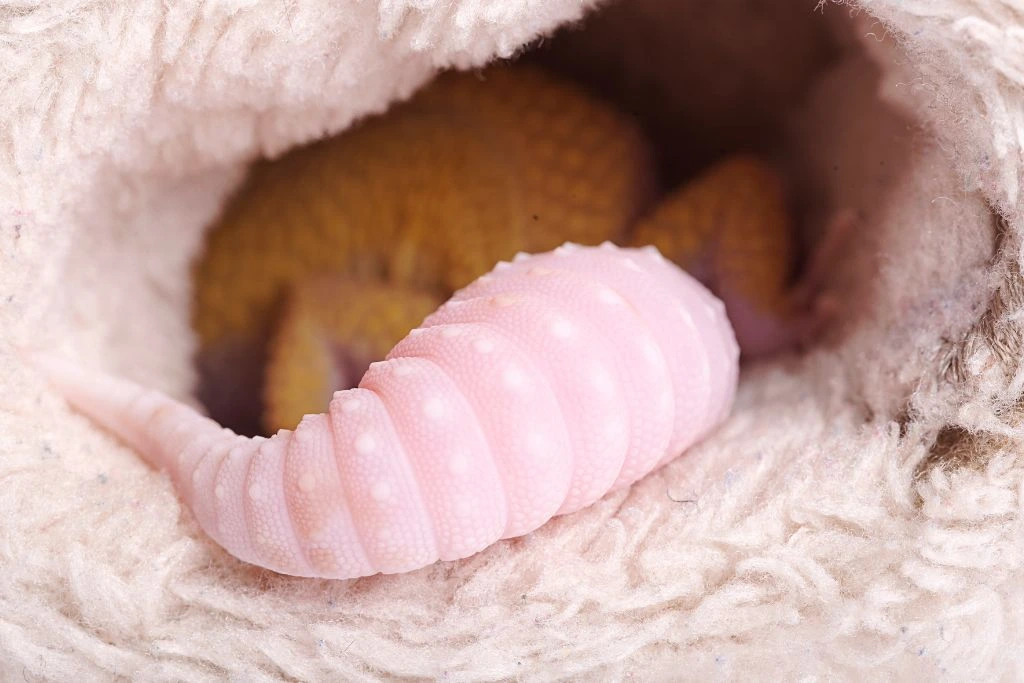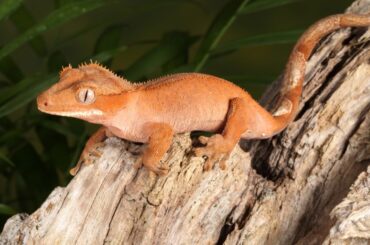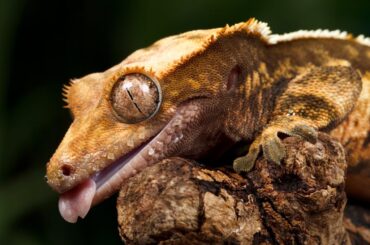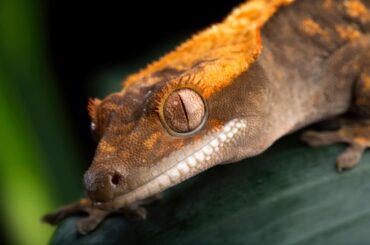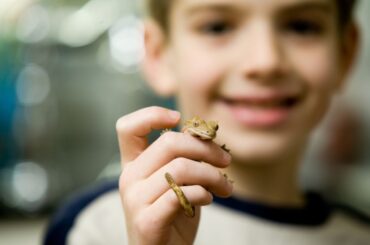Leopard geckos are one of the most popular pet lizards but also one of the most common species to suffer from injury. The tail is often a victim because it’s so slender and flexible that it can get caught or broken in any way imaginable. This can happen when handling your leopard gecko or when playing with them.
While some injuries are minor and can heal without medical intervention, others require emergency care from a vet before healing begins.
In this article, we’ll discuss what healthy Leopard Gecko tails look like and how to know if yours doesn’t seem relatively as healthy as it once was.
Are you ready to learn more about your leopard gecko tail and what it should look like? Read on.
What Does a Healthy Leopard Gecko Tail Look Like?
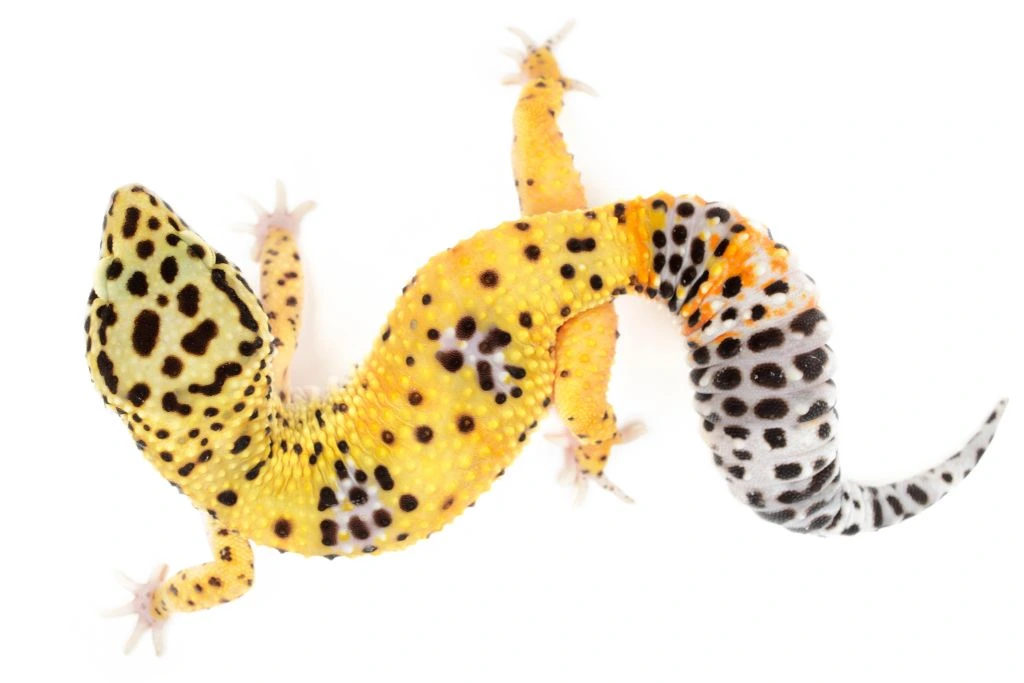
A healthy tail should be thick, fleshy, and free of bumps or lumps. It should not have any discoloration. If your gecko’s tail has a reddish hue, this could indicate an infection in the skin of its tail tip. Your gecko’s skin should not be red or swollen at all. If it is, please contact a veterinarian immediately.
If you notice any scabs or sores on your leopard gecko’s body, or what looks like crusty material forming around its scales, this could be a sign that something isn’t right with its health.
A visible lump on its tail may indicate it is sick or injured. It’s best to avoid handling your lizard until you have a proper diagnosis from your vet.
If your leopard gecko has lost a lot of weight, you’ll notice it on its tails. Skinny tails can mean they’re not getting enough food or water. Try giving them more food and make sure they have access to clean water at all times. It is also essential to know how fat a leopard gecko’s tail should be to keep them healthy.
Examples of Healthy Leopard Gecko Tails
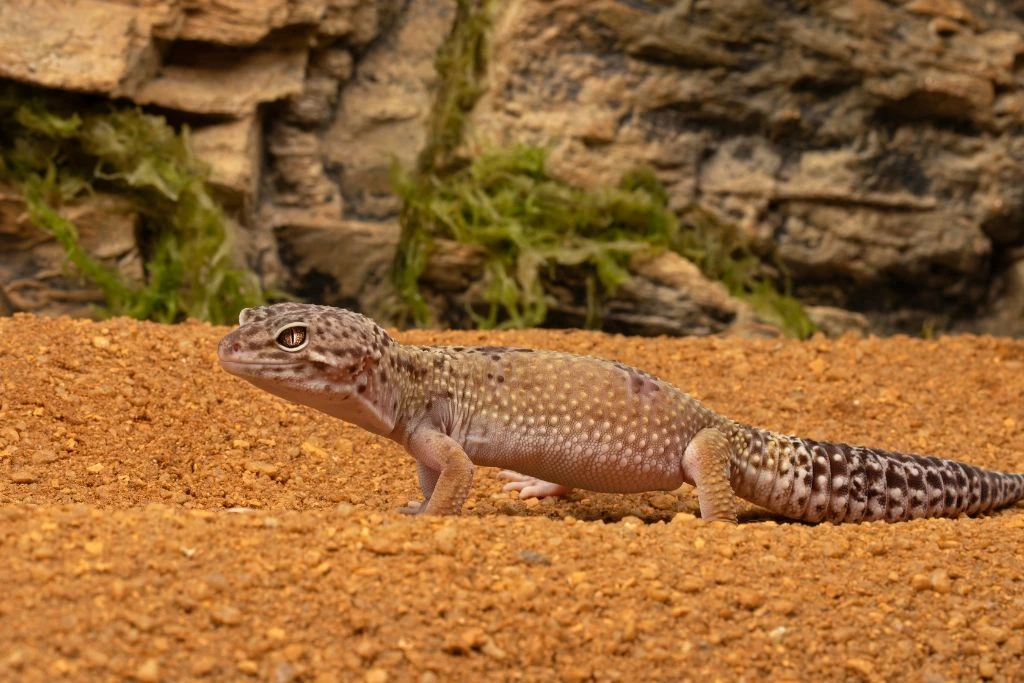
Healthy leopard geckos have long, straight tails that are thick and firm. They should also be free of parasites and have no damage or deformity. You should also know why leopard gecko’s tails are fat.
Healthy leopard geckos have smooth skin that is free of parasites and deformities. If your leopard gecko has any of these signs, it may be sick, and you should take it to a reptile vet as soon as possible.
Here are some signs that your leopard gecko’s tail is healthy.
Thick and Fleshy Leopard Gecko Tails
A healthy gecko tail should be thick and fleshy. It’s okay to have a leopard gecko’s tail as fat and wide as its body. This tail characteristic is a clear indication it is healthy.
The skin should be thick, firm, and free of any parasites. If your gecko has a damaged or diseased tail, it will not be able to move around properly and may die if left untreated.
Bumpy Leopard Gecko Tails
The presence of bumps on their armpits may indicate a high-calcium diet. This can be caused by eating crickets dusted with calcium powder. This diet causes calcium sacs to form on their tails.
If you feel these bumps underneath their tails, however, it could be their hemipenes. These bulges have a vent that houses their intermittent organ for mating. But if you notice them to be abnormally huge, it may be a sign of an underlying disease. It’s best to have a veterinarian check.
Color and Pattern of Healthy Leopard Gecko Tails
The color, pattern, and texture of the tail should be similar to the rest of the leopard gecko’s body. It’s also common to have a slightly different color. It shouldn’t raise an alarm. Ultimately, the best indicator of their health is the thickness of their tail.
How Do We Keep a Leopard Gecko Tail Healthy?
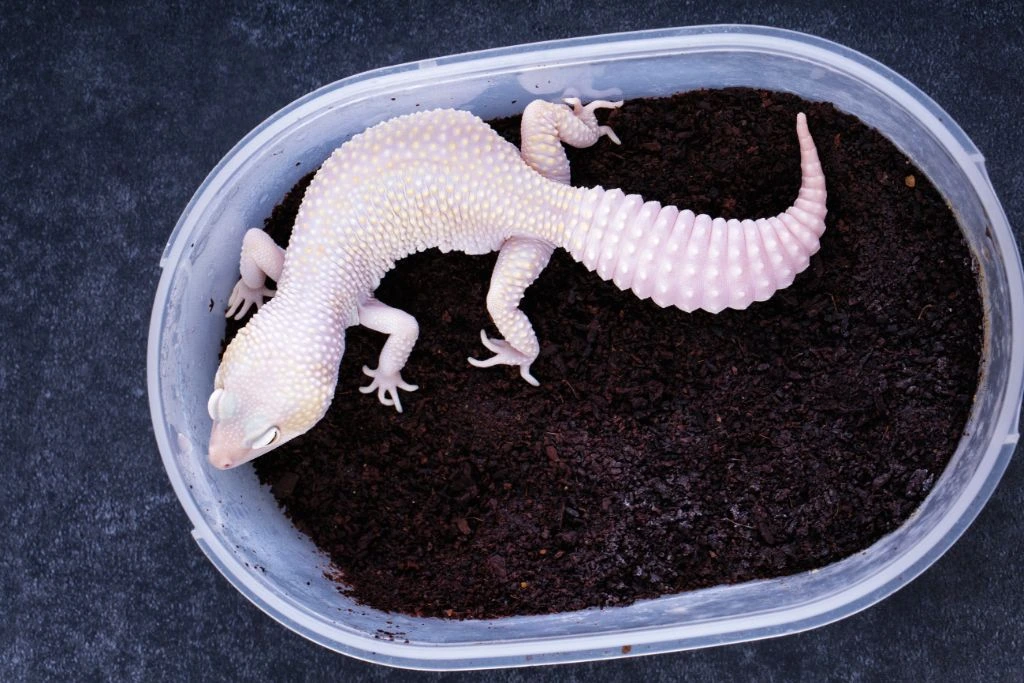
A leopard gecko’s tail serves many purposes. One, they can use it for self-defense; and two, it serves as a reservoir of their fluids, which they can use whenever necessary.
Here’s how you can keep a leopard gecko’s tail healthy.
- Clean the tank and cage. Always keep your leopard gecko’s tank and cage clean to prevent bacteria that can cause illness to your leopard gecko. It can also cause a stick tail disease in a leopard gecko.
- Feed them a healthy diet. If you have been breeding your gecko and keeping them in captivity, it is necessary to feed them once or twice a day. You can use reptile food pellets or live insects as a treat for your leopard gecko’s diet, depending on what kind of insect lives in nature where you live. It’s always better not to give any type of dead animal, like chicken wings. This diet could cause health problems for your pet leopard gecko over time.
- Keep their temperature at the right level. This will help keep their body temperature stable, which means fewer illnesses, and make sure he doesn’t get too hot while sleeping at night.
- Keep them stress-free. Leopard geckos can also feel stress, specifically if they aren’t handled well or they’re not getting their minimum caring requirements. Stress can fuel a lot of issues, such as loss of appetite and lack of energy, which can lead to poor feeding and, eventually, an unhealthy tail.
What Does an Unhealthy Leopard Gecko Tail Look Like?
A leopard gecko’s tail is an important limb. It can serve as a good indication of your reptile’s overall health. It’s a must that you know what to look out for to keep your gecko from having an unhealthy tail and for its overall health.
Here are some signs to watch out for.
Immobile Tail
If you notice that your leopard gecko’s tail is not moving, there are several things you can do to help your pet. First, ensure that your leopard gecko isn’t just asleep and doesn’t move when it wakes up. If your pet sleeps on the ceiling of the cage or tank, try giving it some time to wake up from this position before attempting to move them. Sometimes it can take a while to get their bearings once they’ve been upside down for too long.
If you notice your lizard’s tail is not moving even after they’ve woken up, suspect something’s wrong. Bring your reptile to the veterinarian as soon as possible. One possible cause of immobility is a broken bone in the tail. In such a case, your leopard gecko will require surgery to repair it.
The most common cause of a broken tail is an injury that can occur from disease or old age. If your leopard gecko has been around for a long time and isn’t active, their tail may have fallen off because of the stress on its bones.
Weak and Flaccid Tail
You may also notice that your leopard gecko’s tail will not curl. If it does, the curl is weak and flaccid. This can also indicate poor nutrition or an injury to the bone. Note that the tail is their weak spot. They break easily. Sometimes, all it needs is a tug to break it. It’s also possible for them to pop their tail, for example, by pushing against an object.
Tail Rot
Leopard geckos can also suffer from tail rot. You’ll notice it when the tail slowly turns black until it becomes dry and brittle. This happens when there’s a lack of blood flow to the tail, which may be due to an injury or a parasitic infection.
Skinny Tail
A leopard gecko skinny tail is also an indication of a lack of nutrients. If you see any of these symptoms on your leopard gecko’s tail, it’s time to take action.
Remember, a healthy tail is thick and fleshy. It serves as their storage. So, a thin tail indicates they’re not getting proper nutrition. You might need to check their diet and adjust their feeding schedule until they recover. A poor diet can lead to stick tail disease.
How To Treat an Unhealthy Leopard Gecko Tail
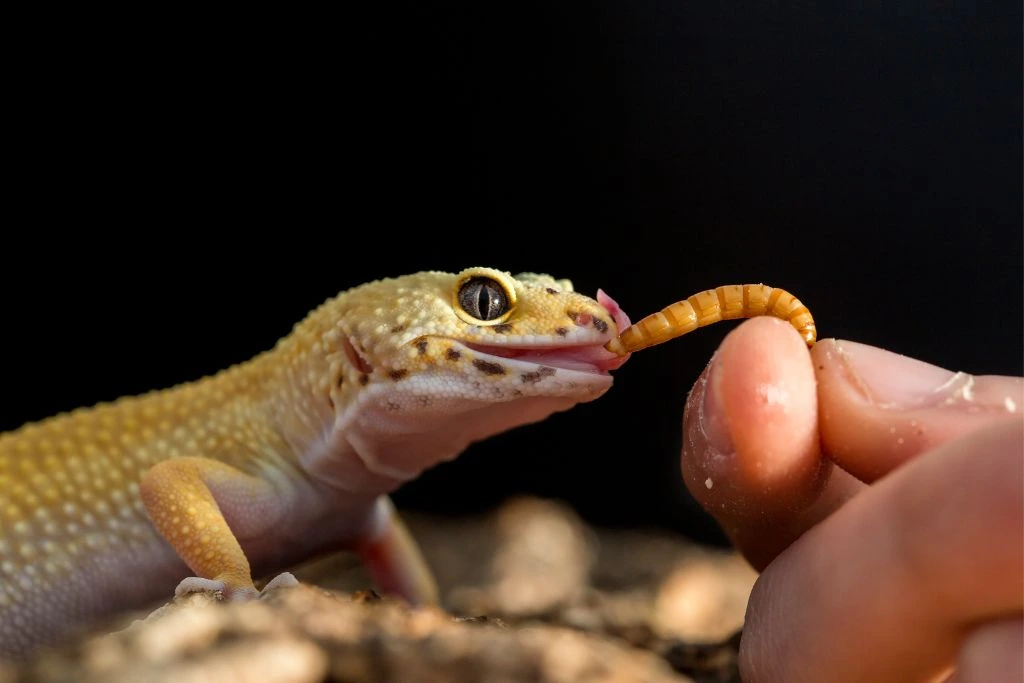
If you notice any of the signs mentioned above, it’s best to treat them as soon as possible.
Adjust Diet and Feeding Schedule
If the cause of the problem is dehydration or poor diet, adjust their nutrition accordingly. You’ll want to give them a balanced diet to have proper nutrition and enough reserves. Before you do this, it’s always best to bring them to a veterinarian for a consultation. They’ll be the best ones to design a feeding regimen that will meet their dietary requirements.
Treat Injuries
In case of an injury with active bleeding, wrap the tail in a warm towel and apply pressure for 15 minutes.
If you have access to an infrared laser, use it on your leopard gecko’s tail to help speed up healing time. It targets specific areas of infection or injury with heat penetrating deep into the tissue.
If you don’t have access to an infrared laser or any other heat source, try applying cool compresses.
Keep in mind that if your leopard gecko’s tail isn’t healing as fast as you’d like, other things may be going on. If this is the case, you should see a vet ASAP because untreated infections can cause serious animal complications.
If your leopard gecko’s tail isn’t healing, it may have lost too much blood and need more nutrients than its body can produce. In this case, you should talk to a vet about how best to feed them.
If you’re concerned about your leopard gecko’s tail, then it’s important to remember that they can go without one for the rest of their lives. However, if you want to save it, it’s best to see a vet as soon as possible.
Conclusion
Caring for a leopard gecko requires full attention and care. It can be time-consuming at first, but once you get the hang of things, it should be easy breezy. Remember, proper care starts as soon as you decide to get one.
The health of their tail doesn’t start when you care for them. Stick tail in leopard geckos, for example, begins with poor husbandry and knowledge about the reptile’s specific needs. When stressed, their immune system suffers, and they get all kinds of diseases.
Before you buy a leopard gecko, research their care and maintenance. Learn about their characteristics that make them unique pets. Know about the appropriate temperature, best feeding guides, and even how to house them. Note that care will vary depending on the species.

